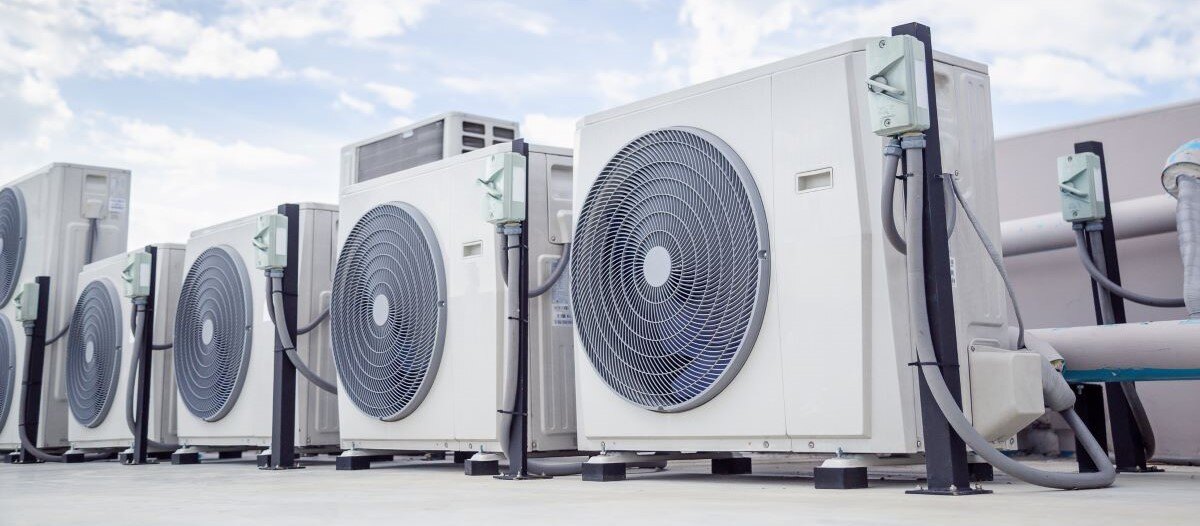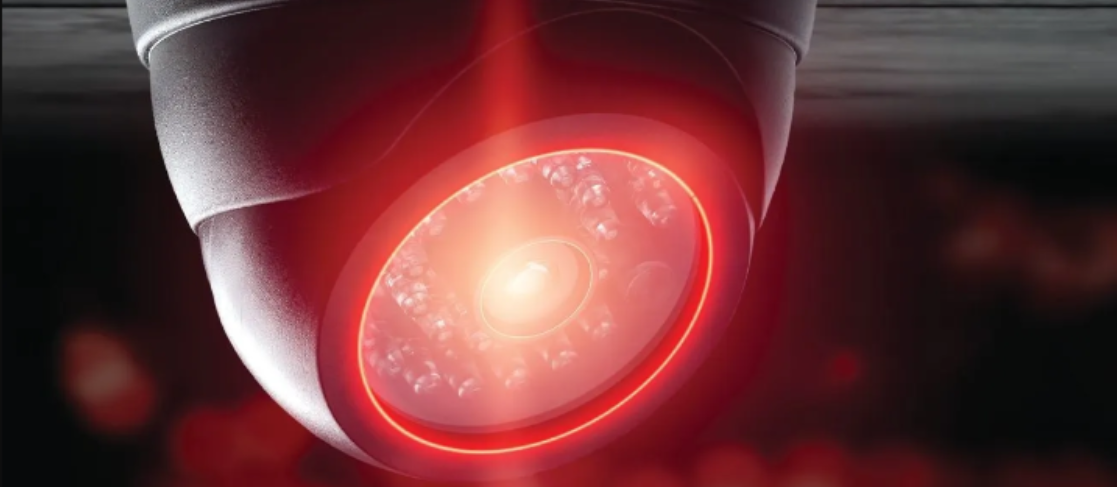Restoring Lost Efficiency
Technological advancements improving HVAC performance

HVAC systems are critical for maintaining indoor comfort in commercial buildings. However, over time, the performance efficiency of HVAC equipment tends to decrease due to aging. This decline in performance can lead to higher energy bills, reduced indoor air quality and more frequent breakdowns.
Aging equipment is a common problem for facility managers, and the cost of replacement or refurbishment is significant. Therefore, it is essential to find ways to mitigate the effects of aging and prolong the lifespan of commercial HVAC equipment.
Several factors can impact the aging of HVAC equipment and contribute to decreased performance efficiency. One of the main components is the quality and frequency of preventive maintenance (PM) performed on the equipment. Poor PM practices can lead to increased wear and tear, reducing the overall lifespan and efficiency.
HVAC systems are critical for maintaining indoor comfort in commercial buildings. However, over time, the performance efficiency of HVAC equipment tends to decrease due to aging. This decline in performance can lead to higher energy bills, reduced indoor air quality and more frequent breakdowns.
Aging equipment is a common problem for facility managers, and the cost of replacement or refurbishment is significant. Therefore, it is essential to find ways to mitigate the effects of aging and prolong the lifespan of commercial HVAC equipment.
Other factors that can impact the aging of HVAC equipment include:
- Run time and loading—equipment that is constantly operating under heavy load will experience more wear and tear and require more frequent maintenance.
- Local environmental conditions—such as exposure to extreme temperatures or harsh weather conditions.
- The manufacturer and equipment model—some models and manufacturers have a reputation for being more durable and long-lasting than others.
Traditional PM
Traditional maintenance for commercial HVAC typically involves a set of routine tasks performed periodically to ensure that the HVAC system is functioning efficiently and reliably.
These tasks may include:
- Inspection of equipment: A thorough inspection of all HVAC system components is conducted to check for any damage, wear and tear or malfunctioning parts.
- Cleaning of equipment: HVAC equipment, such as coils and fans, can collect dirt, dust and debris over time. Regular cleaning of these components helps maintain their efficiency and extend their lifespan.
- Replacement of filters: Filters must be replaced on a frequency dependent upon operational use and air quality conditions. Clogged filters put a high strain on fan motors attempting to move air and cause compressors to run longer to achieve set points.
- Lubrication of moving parts: HVAC systems have many moving parts that require lubrication to operate smoothly and reduce wear and tear. Where accessible compressor oil should be checked.
- Testing of control: Controls and sensors in the HVAC system are tested to ensure they function correctly and accurately.
- Verification of performance: The HVAC system's performance is verified by testing and measuring various parameters, such as airflow, temperature and pressure of air and refrigerant.
- Replacement of worn-out parts: If any components are found to be damaged or out of specification during the inspection, they are replaced to prevent further damage and ensure the system's efficient operation.
Overall, traditional maintenance for commercial HVAC systems focuses on preventive measures to avoid breakdowns, improve energy efficiency, and ensure that the system is functioning optimally.
The impact of refrigerant oil on HVAC performance efficiency
The performance efficiency of HVAC systems heavily relies on the quality of refrigerant oil used in compressors, which is a part of traditional PM (except in hermetically sealed systems with no oil access). Unfortunately, this oil degrades over time due to wear and high temperatures, causing decreased efficiency and increased energy consumption. While some causes of decreased efficiency can be addressed without costly replacements or refurbishments, the refrigerant oil in compressors poses a significant risk to HVAC performance efficiency on two fronts.
First, the oil reduces frictional forces on the mechanical moving parts. As the oil degrades from wear and excessive heat, the friction protection diminishes, causing increased energy use to operate.
Secondly, some of the refrigerant oil escapes the compressor circulating through the heat exchanger coils. The circulating oil mostly returns to the compressor. Still, over time, a residual oil film adheres to the heat exchanger coil walls, an issue referred to as oil fouling, acting as a thermal insulating barrier between the flowing refrigerant and the coil walls, decreasing the efficiency of the system.
In short, ensuring proper maintenance and utilizing high-quality refrigerant oil is crucial for preserving the performance efficiency of HVAC equipment. However, neglecting the effects of refrigerant oil on the system's performance can have significant and long-lasting repercussions.
Alternative solution: Oil additives
To avoid the effects that refrigerant oils can pose on HVAC equipment over time, FMs sought alternative solutions, including oil additives. Oil additives are chemical compounds added to refrigeration oil in HVAC systems to improve the system's performance and lifespan. They aid in restoring lost efficiency by displacing migrated refrigerant oil from coil surfaces, enhancing refrigerant flow and improving heat transfer. Additionally, oil additives offer other benefits, such as reducing wear on system components, minimizing compressor noise and vibration and safeguarding against corrosion and oxidation.
Early forms of oil additives
Initially, the reputation of oil fouling treatments suffered due to the mixed results of early-stage development products. These treatments were first introduced several decades ago, with outcomes that were not consistent. The earlier formulations of these treatments involved chemically cleaning the oil from the surface of heat exchanger coils, using solvents, which resulted in the breakdown of the oil.
However, early-stage products had negative consequences on the lubricating properties of the oil and ultimately led to a reduced lifespan of compressors. Other early formulations included solid particles that were intended to improve the lubricity of compressor components and enhance heat transfer from the refrigerant to the heat exchanger coils. Unfortunately, when these particles deposited on expansion valve surfaces, they negatively affected function, making these unacceptable solutions.
These poor-performing early renditions of oil additives have led to consumer resistance, skepticism, and hesitation in adopting new treatment solutions. Several products on the market lack professional data analysis to support proposed solutions. Frequently, data is not collected and analyzed according to the International Performance and Verification Protocol (IPMVP) data collection and analysis methods. This leaves potential clients questioning the soundness of the product itself and its effectiveness in resolving oil fouling issues and causes many products to face resistance in the market.
New technical advancements in oil additives
Fortunately, times have changed as more advanced products have been introduced to the market and are ready to face the critique brought on by earlier versions. Manufacturers of oil additives are learning they need to prove the efficiency of their products through pilot studies validated by third-party, independent industry engineers and expert analysts.
In recent years advancements in oil additives have been introduced to the market and undergone this intensive performance analysis in some of the harshest climates and have provided excellent results, some of which include:
- Providing long-term savings at locations treated.
- Successfully treating new and old systems.
- Providing a quick payback period on project costs.
- Offering as much as 20 percent in recurring savings in operational costs.
- Extending equipment life by lessening mechanical wear, deferring component and system replacement.
The evolution of oil additives has resulted in a more sophisticated and effective product line that can meet the demands of today's FMs. These new products have shown that they can provide long-term savings, successfully treat new and old systems, offer a quick payback period on project costs, and provide significant operational savings. With these benefits, facility managers can confidently invest in these new oil additives, knowing they are making sound financial decisions.
HVAC Systems and decarbonization
In light of climate change's impacts, curbing greenhouse gas emissions has become a priority for governments, businesses and individuals. Among the sectors that contribute significantly to global emissions, commercial buildings rank high. Per the International Energy Agency, commercial buildings stand fourth in the list of CO2e emitters worldwide. Within commercial buildings, HVAC systems are the prime culprits, generating 67 percent of the total emissions.
As FMs must balance daily operational requirements with the need to lower carbon footprints and energy costs, they face a significant challenge. HVAC systems play a crucial role in occupant comfort and energy consumption and their decarbonization is crucial to attaining facility sustainability goals.
By using oil additives, facility managers can restore lost efficiency, reduce wear, and tear on system components and improve heat transfer, all of which can help reduce energy consumption and lower carbon emissions.
Furthermore, by improving the performance and longevity of HVAC systems, oil additives can help reduce the need for new HVAC installations, which in turn reduces the carbon emissions associated with the manufacturing and transportation of new equipment.
FMs understand the negative impact that poorly performing HVAC systems can have on their financial results. Therefore, implementing a reliable PM program is crucial to maintain the smooth operation of a facility's HVAC system. To achieve this, they are continuously seeking ways to enhance efficiency and prolong their systems' lifespan. By integrating these new oil additives into their PM programs, FMs can be confident that they are utilizing a safe and effective product. These oil additives contain advanced compounds that can generate long-term savings while minimizing mechanical wear and postponing system replacement.
By employing oil additives, FMs can boost their systems' performance, reduce component wear and enhance heat transfer. All these benefits can lead to lower energy consumption and decreased carbon equivalents emissions. Additionally, by improving the functionality and durability of HVAC systems, oil additives can reduce the need for new HVAC installations, which can lower the carbon emissions connected to the production and transportation of new equipment.

Michael Daly, P.E., chief technology officer at ECM Technologies, has more than 30 years of engineering and business management experience. He has made a career of developing, manufacturing and selling lifesaving and life-changing technologies focused on energy conservation measures. Daly has a PE license in the state of Arizona, with his BSME from the University of Arizona and executive education through the Harvard Business School Program for Management Development. Additionally, he received his program management certification, PMP, through PMI and is certified in several quality methodologies.
Read more on Operations & Maintenance , Occupancy & Human Factors and Real Estate
Explore All FMJ Topics









